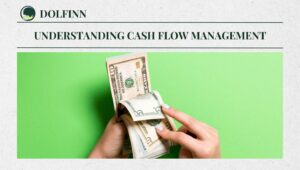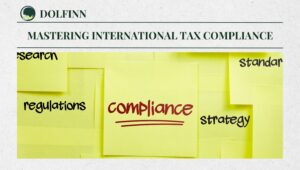
Accounting for Plant, Property, and Equipment (PP and E)
It plays a critical role in a company’s financial reporting. This article explores PP and E under US Generally Accepted Accounting Principles (GAAP), covering essential aspects such as recognition, measurement, depreciation, impairment, disposal, and disclosures. We will also highlight key differences between US GAAP and International Financial Reporting Standards (IFRS) to provide a well-rounded understanding of PP and E accounting.
What is PP&E?
Tangible Assets
PP&E represents tangible assets that have a physical form and are expected to benefit the company over more than one accounting period. These are assets that are not intended for resale, distinguishing them from inventory, and are instead used in a company’s operations to generate revenue.
Examples include:
- Buildings
- Machinery
- Land
- Equipment
- Vehicles
PP&E assets are essential for business operations, and their value is spread over time through depreciation, unlike inventory or financial assets, which are more short-term.
Used in Operations
The unique characteristic of PP&E is its role in the company’s operations. While these assets may increase in value, their purpose is to generate ongoing revenue and assist in business activities such as manufacturing, sales, or services. Therefore, PP&E is not meant for immediate resale but is rather a long-term investment used in the company’s daily functions.
When Should You Recognize PP&E?
PP&E should be recognized on the financial statements when three key criteria are met:
- Control of the Asset:
The company must have control over the asset. This means the company can benefit from its use while restricting others from accessing or benefiting from it. This control can arise through purchasing the asset, leasing it, or other contractual arrangements. - Probable Future Economic Benefits:
The asset must be expected to bring future economic benefits to the company. These benefits typically come in the form of future revenue generation or cost savings. The key idea is that the asset will contribute to the company’s operations over time. - Measurable Cost:
The cost of acquiring the asset must be reliably measurable. This includes not only the purchase price but also any directly attributable costs like transportation, installation, and setup, as well as legal fees related to the acquisition.
How is PP&E Initially Measured?
PP&E assets are initially measured at their historical cost, which represents the total expenditure incurred to acquire the asset and prepare it for use. Historical cost includes:
- Purchase Price: The agreed price to acquire the asset.
- Directly Attributable Costs: These include costs such as transportation fees, installation charges, professional fees (e.g., engineering, legal), and testing costs.
- Capitalized Interest: Interest incurred on loans during the construction phase of an asset (such as a building or plant) can be capitalized as part of the cost if certain conditions are met under US GAAP.
Components of Initial Measurement:
- Purchase Price: For a building, the purchase price would include the cost paid to the seller, adjusted for discounts or rebates.
- Directly Attributable Costs: Suppose the building’s construction involves freight charges for the materials; these costs would be capitalized alongside the building’s cost.
- Capitalized Interest: If a company borrows money to finance the construction of an asset, the interest on the borrowed money during the construction phase could be added to the asset’s value instead of being expensed immediately.
Subsequent Measurement: Depreciation and Impairment
Once PP&E is recorded at its initial value, subsequent measurements usually involve:
Depreciation
Depreciation is the process of systematically allocating the cost of a tangible asset over its estimated useful life. The goal is to match the expense to the revenue that the asset helps to generate.
Depreciation Methods:
- Straight-Line Method: The same amount of depreciation expense is recognized each year over the asset’s life.
- Declining Balance Method: Depreciation expense is higher in the earlier years of the asset’s life and reduces as the asset ages.
- Units of Production Method: Depreciation is based on the asset’s usage or production output, such as hours worked or units produced.
The choice of depreciation method depends on how the company expects to benefit from the asset.
Impairment
Impairment occurs when the carrying value of an asset exceeds its recoverable amount (i.e., the amount the company expects to recover from the asset through usage or sale). This loss is recognized in the financial statements when identified.
Common triggers for impairment include:
- Sudden market declines.
- Physical damage to the asset.
- A reduction in the asset’s expected useful life.
Derecognition of PP&E
PP&E is derecognized (removed from the company’s books) under the following circumstances:
Sale or Disposal
- When an asset is sold or otherwise disposed of, it is removed from the balance sheet.
- The company records the proceeds from the sale and compares it to the asset’s carrying value. Any difference between the sale proceeds and the carrying value is recognized as a gain or loss in the income statement.
Abandonment
- If an asset becomes obsolete or is abandoned (i.e., it no longer serves a functional purpose), it should be derecognized.
- No proceeds are received, and the asset is written off, with a loss recognized based on the asset’s carrying amount.
PP&E Disclosures in Financial Statements
US GAAP requires companies to provide disclosures about PP&E to give investors a clearer understanding of how these assets affect the company’s financial position. The key disclosures include:
- Depreciation Methods:
The company must specify the depreciation method used for each class of asset (e.g., straight-line, declining balance, units of production). - Useful Lives:
Disclosure of the expected useful lives or depreciation rates of PP&E provides insight into how long assets are expected to benefit the company. - Gross Carrying Amount and Accumulated Depreciation:
The total cost of each class of PP&E, along with the accumulated depreciation, is disclosed. This helps users of the financial statements understand the asset’s net book value. - Impairment Losses:
Companies must also disclose the amount of impairment losses recognized in the period, if applicable, along with details on the circumstances leading to the impairment.
US GAAP vs IFRS: Key Differences
While US GAAP and IFRS are largely aligned on PP&E recognition, measurement, and depreciation, there are some notable differences:
Revaluation of Assets
- US GAAP requires assets to be measured at historical cost with depreciation and impairment adjustments.
- IFRS, on the other hand, allows the revaluation model, enabling companies to measure certain assets at fair value rather than historical cost if certain conditions are met.
Depreciation Flexibility
- Under US GAAP, once a method is chosen (e.g., straight-line or declining balance), it must remain consistent unless a change is justified.
- IFRS offers more flexibility, allowing companies to change depreciation methods based on the asset’s use.
Component Depreciation
- Under IFRS, each significant component of an asset must be depreciated separately if its useful life is different from the rest of the asset. US GAAP typically does not require this.
Practical Examples: Acquisition, Depreciation, and Disposal
Acquisition
A company purchases a new manufacturing machine for $100,000. This includes:
- Machine cost: $90,000
- Transport and installation fees: $10,000
The total cost of $100,000 is recorded on the balance sheet as the initial measurement.
Depreciation
The machine’s useful life is estimated at 10 years. Using the straight-line method, the company will recognize annual depreciation of $10,000 ($100,000 / 10 years).
Disposal
After 10 years, the machine is sold for $20,000. The carrying value after depreciation is $10,000. The loss of $70,000 ($90,000 original cost – $10,000 depreciation – $20,000 sale proceeds) is recognized in the financial statement as a loss on disposal.
For more information you can visit:
- Depreciation Methods Explained: A Comparison of Straight-Line, Declining Balance, and Units of Production (CFI)
- US GAAP vs IFRS: Key Accounting Differences Every Business Should Know (ClearTax)
- The Role of Tangible Assets in Corporate Finance and Operations (InvestoPedia)
- How to Accurately Calculate and Report Impairment Losses on Assets (FreshBooks)
Conclusion: Why Accurate PP and E Accounting Matters
Properly accounting for PP&E is vital for several reasons:
- Transparency: Accurate PP and E accounting ensures that financial statements give a truthful and fair view of the company’s financial position.
- Investor Confidence: Clear financial reporting builds investor trust, enabling easier access to capital and boosting financial stability.
- Regulatory Compliance: Adhering to US GAAP ensures financial consistency and comparability, simplifying analysis and decision-making.
By following US GAAP guidelines, companies contribute to financial transparency and support business growth in a competitive environment.
FAQs Related to PPE Accounting
What is considered PP&E in accounting?
PP&E refers to tangible assets with a physical form that are used in a company’s operations to generate revenue over more than one accounting period. Examples include buildings, machinery, land, equipment, and vehicles. These assets are not intended for resale but are long-term investments essential for business operations.
How is PP&E initially measured?
PP&E is initially recorded at its historical cost, which includes:
- The purchase price of the asset.
- Directly attributable costs such as transportation, installation, and legal fees.
- Capitalized interest during the construction phase (if applicable).
What are the common methods of depreciating PP&E?
Depreciation systematically allocates the cost of a tangible asset over its useful life. Common methods include:
- Straight-Line Method: Equal depreciation expense each year.
- Declining Balance Method: Higher depreciation expense in earlier years.
- Units of Production Method: Depreciation based on usage or production output.
What triggers an impairment of PP&E, and how is it handled?
Impairment occurs when the carrying value of an asset exceeds its recoverable amount. Common triggers include market declines, physical damage, or reduced useful life. When impairment is identified, the loss is recognized in the financial statements as the difference between the carrying value and the recoverable amount.
This version expands the original concepts, includes in-depth details on specific measurements, and provides clear examples to demonstrate the key processes in PP and E accounting. Additionally, it dives deeper into the GAAP vs IFRS differences, ensuring a richer understanding of the subject.
If you want to learn more about accounting you can also read Lease Accounting in Related-Party Transactions
Summary
ASC 820 standardizes fair value measurements using hierarchy levels, enhancing transparency and compliance.
Latest Posts
- Top Cash Flow Forecasting Tools You Can’t Ignore for Global Businesses

- Mastering Profit vs. Cash Flow: 5 Key Strategies for Financial Success

- 5 Key Advantages and Disadvantages of Outsourced Accounting: Is Outsourced Accounting Worth the Risk?

- Mastering Cash Flow Management in 2025: 7 Proven Strategies for Financial Success

- Mastering International Tax Compliance: 7 Crucial Strategies for Multinational Success

- 5 Common Bookkeeping Mistakes Small Businesses Make and How to Avoid Them

